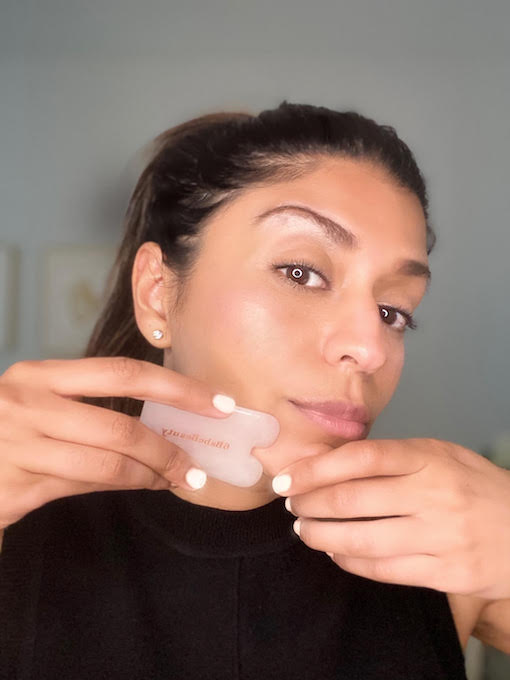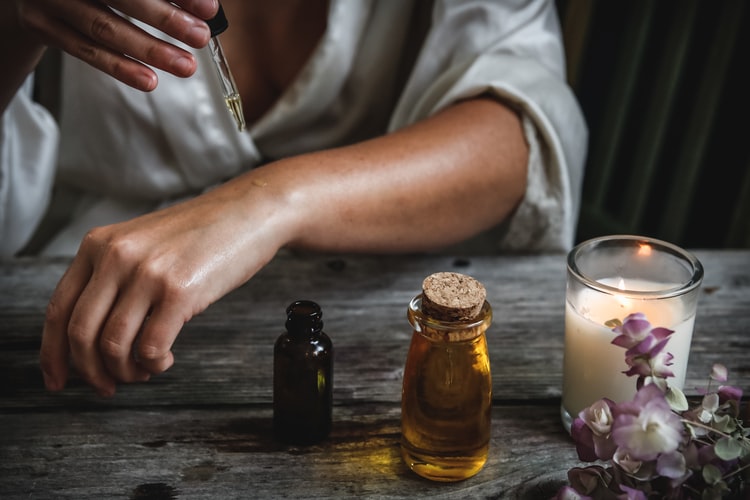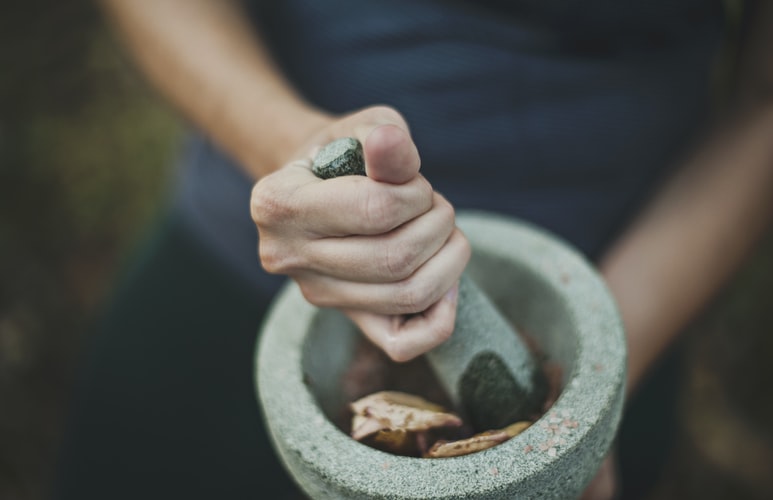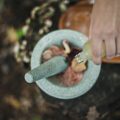Entrepreneur and acupuncturist, Amrit Singh R.Ac, spills the tea on four of her favourite cultural beauty rituals around the world. From gua sha to hair oiling, try these local ancient beauty secrets for wellbeing and to experience global traditions at home.
What do sheet masks, hair oiling, gua sha, and jade rollers have in common with exploring our world? Well for starters, these at-home beauty rituals from around the world are about to become your favourite kind of armchair travel. What’s not to love about an adventure from home that leads to healthy hair and skin?
Even before K-beauty came on the scene, we’ve been fascinated with traditions and beauty secrets from around the world. Ayurvedic methods, for example, have been popular now for the last few decades.
But do you know about the rich heritage preceding the cultural beauty rituals that are blowing up on Instagram? Many of these practices are rooted in old-world traditions that have been passed down for centuries.
We’ve been aspiring to find ways to enrich our lives at home and recreate some of the magic we feel while travelling. Adding cultural beauty rituals to your self-care routine is a sure-fire way to experience something from a different part of the world right now.

With a practice centred in natural cosmetic acupuncture, Singh has always been inspired to seek out teachers and experiences of these traditional practices first-hand while travelling. She says “going to the heart of where these rituals are coming from, you see how ingrained they are in history and culture. For example, in Asia, people will go for acupuncture the same way they go for a haircut.”
“The beauty of these ancient rituals is that not only do they work, but it allows for other cultures to be exposed, understood, studied and valued. I feel like people are more curious about Chinese herbs if they are a skincare ingredient.”
Bring about some life-enriching self-care and discover how traditional practices can transport – try all four of Singh’s favourite cultural beauty rituals from around the world at home.
Jade facials rollers
Known in China as yushi gunlun, jade rollers have been part of Chinese beauty routines since the Qing dynasty, which began in the early 17th century. Chinese royalty and nobility would use these small handheld wands to massage their faces to help de-puff and tighten their skin.
While jade has held a place of prestige in Chinese culture for ages, rollers were relatively unknown abroad until a few years ago. Since word got out about the skin-rejuvenation benefits – facial rolling has become one of the go-to cultural beauty rituals from around the world.
Singh says if you’re new to using tools on your face, jade rollers are perfect for beginners. “Facial rolling is something I’ve been doing for a very long time. To get used to using a tool on your face, start with rolling. It’s very straightforward. Which is why I think this is the first tool that really took off, but for the best results it has to be gua sha.”

Gua sha
Gua sha as a tool for facial massage is a practice rooted in Chinese medicine that has been gathering steam more recently. The tool itself is considered a treasured possession, often passed down from grandparent to mother to daughter.
Singh explains that gua sha is an important part of history. “This lineage of the tools is amazing. In the Beijing Traditional Chinese Medicine Museum, I was able to see historical gua sha tools preserved as artefacts.”
Singh first came across gua sha while learning it therapeutically at school when she was training to become an acupuncturist. “Doing gua sha on your body in Asia is very normal, whereas, in North America, people are more hesitant about the marks it can leave on the body. What’s nice about it becoming a beauty trend, is that more people are learning about the benefits of gua sha.”
“I got body gua sha done properly in Seoul that left temporary therapeutic marks on my back. You can only get those kinds of treatments in Asia or with very traditional practitioners in North America. I think at some point people will start travelling for these natural treatments the same way they travel globally for things like foodie experiences.”

“Facial gua sha is easy to do at home, even after one proper treatment, you’ll notice a difference. With repeated treatments, just the same way as working out, you’ll really see the effects. It’s a natural way to shape and contour your face. For a really valuable self-care practice where you can connect with yourself, gua sha is a nice way to get so many different benefits with one tool.”
Singh actually offers online gua sha classes, but given how popular this beauty ritual has become, they are often sold out – she does have a waitlist though for people that want to learn this ancient art effectively.
Hair oiling
The history of hair oiling can be traced back to many parts of the world. Research on mummies shows that ancient Egyptians used plant and animal fats on their hair, and in ancient Greece, women relied on olive oil to condition their luscious locks.
In the Middle East and Africa too, women have been oiling their hair for over 4,000 years. However, in Western culture, this practice was reintroduced through the 5000-year old practice of Ayurvedic medicine. Known as murdha taila – which literally translates to anointing the scalp with oil – performing this sacred ritual with warm coconut oil is one that will transport you to ancient Indian times.

Beyond the hair-fortifying aspect of it, like many beauty rituals from around the world, oiling has been passed down from generation to generation. As grandmothers and mothers and aunts comb fragrant oil through the hair of their daughters, nieces and sisters, they share stories with one another. And it’s not just for women, throughout the Indian subcontinent, men often get their head massages with oil at barbershops too.
Singh recommends this beauty ritual as it’s very easy to do. “You have time right now, and because you’re at home, it’s possible to keep the oil in your hair for longer. Remember, oil is one of the most important substances in Ayurvedic medicine. It’s an essential substance used in skincare because oil can preserve. It carries botanicals very well and is also a big part of this hair ritual.”
She goes on to explain, “this calming and relaxing practice is very grounding, there are so many nerve endings in your scalp, the root of your hair is also there, and in Chinese medicine, there are many acupuncture points on this part of the body. This, among other reasons, is why head massages feel so good.”
Face masks and sheet masks
The Ayurvedic Haldi Ubtan face mask which originated in India, over 5000 years ago, is considered to be the first beauty product ever created.
While the tradition of Indian men and women taking care of their hair and skin was in part for religious rituals and wedding festivities, beauty practices were also part of self-care routines to live a healthy and long life. Made of turmeric, plants, herbs and flowers, Ubtan is usually mixed with water or milk and then applied to the skin. Even today, many women across the Indian subcontinent use variations of this recipe to make their own face masks to apply at home.
Singh loves making turmeric masks too, “it’s very much rooted in my culture. People normally put it on when they are getting married, and I’m just out here doing it at home.” Her go-to recipe for an anti-inflammatory mask that can help with acne and pigmentation is turmeric, white sandalwood powder, honey, lemon and a little bit of rose water.

The second wave of ancient face masks that are popular today was born on the banks of the River Nile. Cleopatra, a woman famed for her beauty, would apply a clay mask made out of dead sea mud twice a week to cleanse her skin, along with using egg whites to tighten her pores.
Regarded as one of the Four Ancient Beauties of China, Tang dynasty’s Yang Guifei is believed to be a pioneer of the use of beauty masks in China. Her favourite face mask was made out of crushed pearls, jadeite, lotus root and ginger. And in Ancient Rome, women would use ingredients like oil, honey and vinegar in their face mask creations.
Today, the benefits of face masks have been reimagined through the application of sheet masks, and it’s taken the world by storm. In the 1800s, Parisian women would wrap their faces with slices of beef to slow signs of ageing.
Fast-forward to 2020, K-beauty has paved the way for our craze over sheet masks. While sheet masks are one of Singh’s favourite at-home beauty rituals, “they are so easy to do. You can pop one on for twenty minutes, and boom, you’re done,” for her, it is more than skin-deep.
“Think about how Korean skincare blew up and put the country in the spotlight. The same thing happened to India when yoga became a trend in the west. We’ve never really thought about how beauty and skincare can catapult us on adventures in the same way foodies go to Italy, but these ancient practices are starting to inspire journeys to new places. People are getting more exposed to cultures they wouldn’t normally think about because of beauty rituals around the world.”


